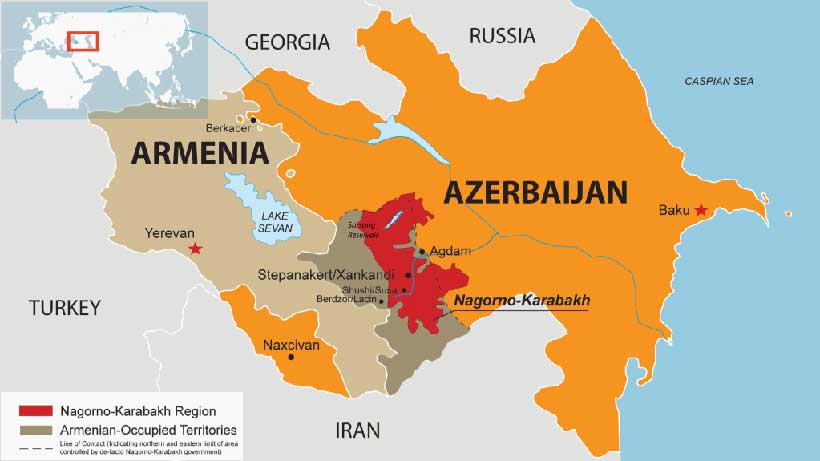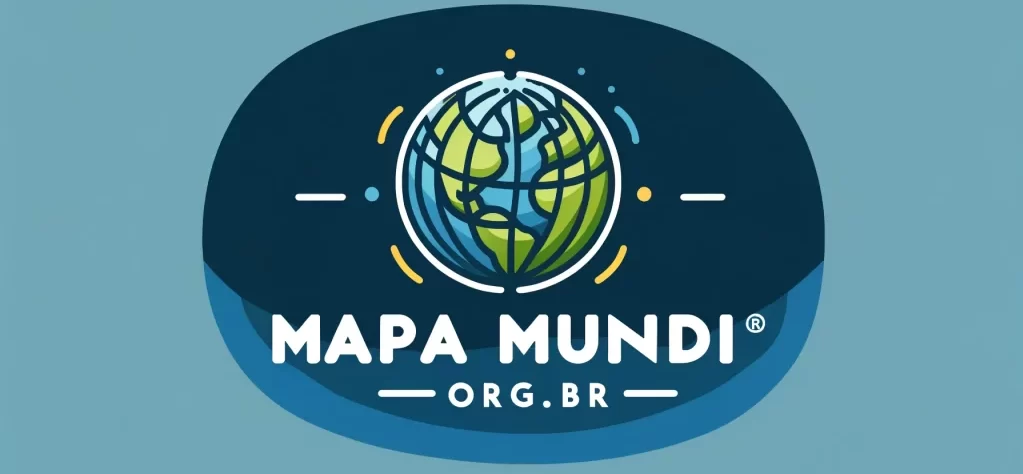
Autores: Isabela Paez Halak e Natália Yuri Kitayama
No dia 27 de setembro de 2020, o confronto em Nagorno-Karabakh ou Artsakh, região no sul do Cáucaso disputada pela Armênia e pelo Azerbaijão, reacendeu. Os dois países se acusaram de atacar o território autônomo, pertencente aos azeris, mas que possui uma população, em sua maioria, etnicamente armênia e um governo também de armênios
O conflito data desde 1920, quando ambos os países foram anexados pela recém-formada União Soviética. Nessa época, Josef Stalin comandava o Comissariado de Nacionalidades da URSS, criado para lidar com as nações não-russas incorporadas ao território soviético, e decidiu que a área de Nagorno-Karabakh faria parte do Azerbaijão, mesmo que houvesse mais armênios residentes ali. Com o enfraquecimento da URSS na década de 1980, a situação se agravou e se transformou em uma guerra que resultou em trinta mil mortos e centenas de milhares de refugiados, não só por uma questão territorial, mas também por um conflito étnico e religioso. Isso perdurou até 1994, quando o Grupo de Minsk, estrutura criada dentro da Organização para a Segurança e Cooperação na Europa (OSCE) para a resolução do conflito em Nagorno-Karabakh, mediou um cessar-fogo entre os envolvidos.
O retorno do conflito em 2016, que ocorreu durante quatro dias, foi considerado o pior desde 1994. No entanto, esse título é dado, atualmente, ao confronto que teve início em setembro de 2020, já que os ataques resultaram em refugiados e contabilizaram mais de cinco mil mortos, segundo Putin. Além disso, os bombardeios também colocam em risco os interesses de países vizinhos. Apesar da Rússia se posicionar como principal aliada da Armênia, o Kremlin mantém relações com o Azerbaijão, uma vez que vende armas para o país. Ademais, os russos possuem interesses nas reservas de hidrocarbonetos azeri e em proteger os oleodutos na região do Cáucaso. Por outro lado, a Turquia é a principal aliada do Azerbaijão devido à origem turca do povo azeri e às relações comerciais entre os Estados.
Após a tentativa de três cessar-fogo pelo Grupo de Minsk, o Primeiro-Ministro da Armênia enviou ao Kremlin um pedido de assistência para a segurança dos armênios segundo o Acordo de Amizade, Cooperação e Ajuda Recíproca de 1997, enquanto a Turquia teria enviado ajuda militar ao Azerbaijão. Ademais, os azeris invadiram Shusha, cidade em Nagorno-Karabakh com importância militar e que tem acesso à Armênia, no dia oito de novembro. Contudo, no dia dez de novembro, entrou em vigor um Acordo de Paz entre a Rússia, Armênia e Azerbaijão. Dessa forma, Nagorno-Karabakh continua sendo um território azeri, mas a Armênia não se dá por derrotada e a sua população protesta contra o acordo.
Referências Bibliográficas
Entenda por que Azerbaijão e Armênia estão em conflito em Nagorno-Karabakh. CNN, 29 set. 2020. Disponível em <https://www.cnnbrasil.com.br/internacional/2020/09/29/entenda-por-que-azerbaijao-e-armenia-estao-em-conflito-em-nagorno-karabakh> . Acesso em 17 out. 2020.
GIELOW, Igor. Combates continuam apesar de cessar-fogo entre Armênia e Azerbaijão. Folha de São Paulo, 13 out. 2020. Disponível em <https://www1.folha.uol.com.br/mundo/2020/10/combates-continuam-apesar-de-cessar-fogo-entre-armenia-e-azerbaijao.shtml> . Acesso em 17 de out. 2020.
Stalin’s Legacy: The Nagorno-Karabakh Conflict. Association for Diplomatic Studies & Training, 6 ago. 2013. Disponível em <https://adst.org/2013/08/stalins-legacy-the-nagorno-karabakh-conflict/>. Acesso em 17 out. 2020.
Rússia disponibiliza “apoio necessário” a Armênia caso conflito atinja território do aliado. Folha de São Paulo, 31 out. 2020. Disponível em < https://www1.folha.uol.com.br/amp/mundo/2020/10/russia-disponibiliza-apoio-necessario-a-armenia-caso-conflito-atinja-territorio-de-aliado.shtml>. Acesso em 31 out. 2020.
LOSH, Jack; ROTH, Andrew. Nagorno-Karabakh peace deal brokered by Moscow prompts anger in Armenia. The Guardian, 10 nov. 2020. Disponível em < https://www.theguardian.com/world/2020/nov/10/nagorno-karabakh-armenia-pm-signs-deal-to-end-war-with-azerbaijan-and-russia?CMP=Share_AndroidApp_Other>. Acesso em 10 nov. 2020.
O Núcleo de Estudos e Negócios Europeus (NENE) está ligado ao Centro Brasileiro de Estudos de Negócios Internacionais & Diplomacia Corporativa (CBENI) da ESPM-SP. Foi criado considerando a necessidade de estimular a comunidade acadêmica brasileira e latino-americana a compreender melhor suas relações com os europeus, buscando compreender e aprofundar a Parceria Estratégica Brasil – União Europeia.
